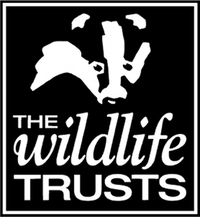 The logo of the Wildlife Trusts | |
| Abbreviation | YWT |
|---|---|
| Formation | 1 January 1946 |
| Type | Registered charity No.210807 |
| Legal status | Registered Charity and Company limited by guarantee No.409650 |
| Purpose | Nature conservation |
| Headquarters | York |
| Location |
|
Chief Executive | Rachael Bice |
| Affiliations | The Wildlife Trusts partnership |
Budget (FY20/21) | £13 million |
| Website | Official website |
The Yorkshire Wildlife Trust is a charitable non-governmental organisation,[1] one of the UK's 46 county-based Wildlife Trusts.[2] Its focus is nature conservation and it works to achieve a nature-rich Yorkshire with healthy and resilient ecosystems that support both Yorkshire's wildlife and its people.[3]
It works across the ceremonial counties of East, North, South, and West Yorkshire; with the exception of the Sheffield District and some of Rotherham District, where the separate Sheffield and Rotherham Wildlife Trust operates,[4] and the Unitary Authorities of Middlesbrough, Redcar and Cleveland, and Stockton-on-Tees, where the separate Tees Valley Wildlife Trust operates.[5]
The second oldest Wildlife Trust, having been originally formed as the Yorkshire Naturalists Trust in 1946,[6] it is now one of the largest Wildlife Trusts with an income of over £13 million, and over 150 staff.[7] The Trust is a membership organisation and has grown to become one of the largest civil society organisations in Yorkshire, with over 50,000 members spread across the county.[8]
Although originally founded to manage nature reserves; much of the Trust's impact is now achieved by collaborating with and supporting other land owners and land managers to contribute to the recovery of Yorkshire's nature.[9] Of particular note, the Trust is recognised as a world leader in peatland restoration. Having supported land owners to restore over 30,000 hectares of peat across the county since the mid-2000s.[10] The Trust also has a marine conservation programme, with a particular focus on seagrass and oyster restoration in the Humber Estuary.[11]
The Trust also runs an extensive outreach and engagement programme.
- ^ "YORKSHIRE WILDLIFE TRUST – Charity 210807". register-of-charities.charitycommission.gov.uk. Retrieved 17 March 2022.
- ^ "About us | The Wildlife Trusts". www.wildlifetrusts.org. Retrieved 17 March 2022.
- ^ "About Us | YWT". www.ywt.org.uk. Retrieved 17 March 2022.
- ^ "Sheffield & Rotherham Wildlife Trust - wildsheffield.com". Sheffield & Rotherham Wildlife Trust. Retrieved 17 March 2022.
- ^ "Managing Nature". Tees Valley Wildlife Trust. Retrieved 17 March 2022.
- ^ "Yorkshire Wildlife Trust Archive – Borthwick Catalogue". borthcat.york.ac.uk. Retrieved 17 March 2022.
- ^ "How we are funded | Yorkshire Wildlife Trust". www.ywt.org.uk. Retrieved 17 March 2022.
- ^ "How we are funded | Yorkshire Wildlife Trust". www.ywt.org.uk. Retrieved 17 March 2022.
- ^ "How we are funded | Yorkshire Wildlife Trust". www.ywt.org.uk. Retrieved 17 March 2022.
- ^ "Give Peat a Chance | Yorkshire Wildlife Trust". www.ywt.org.uk. Retrieved 17 March 2022.
- ^ "Restoring oysters on the Humber | The Wildlife Trusts". www.wildlifetrusts.org. Retrieved 17 March 2022.